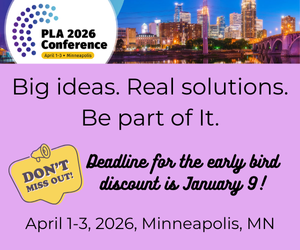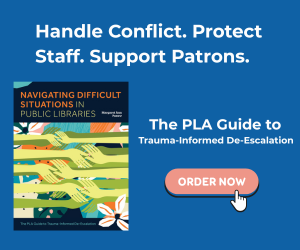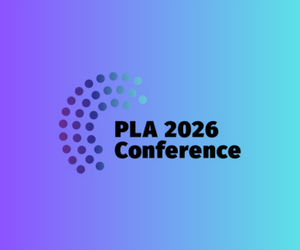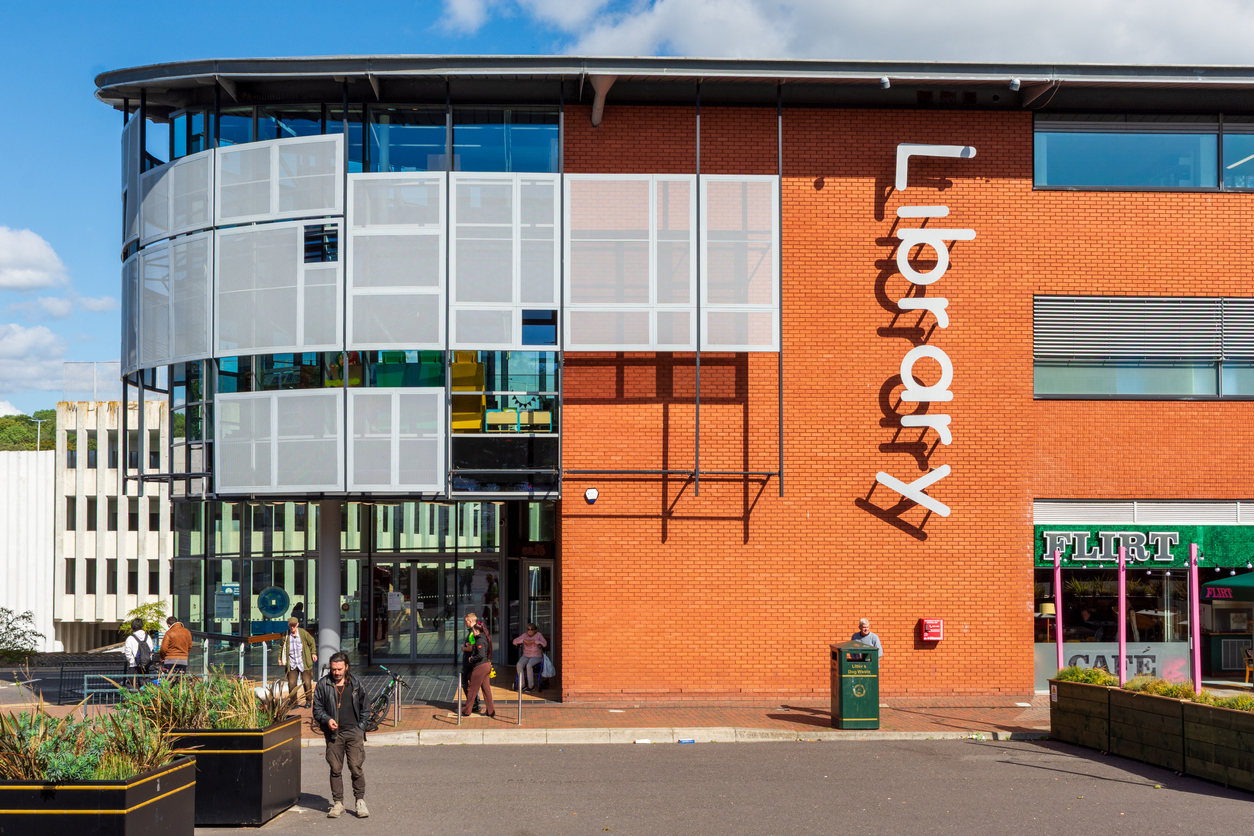The Science of Reading @ Your Public Library
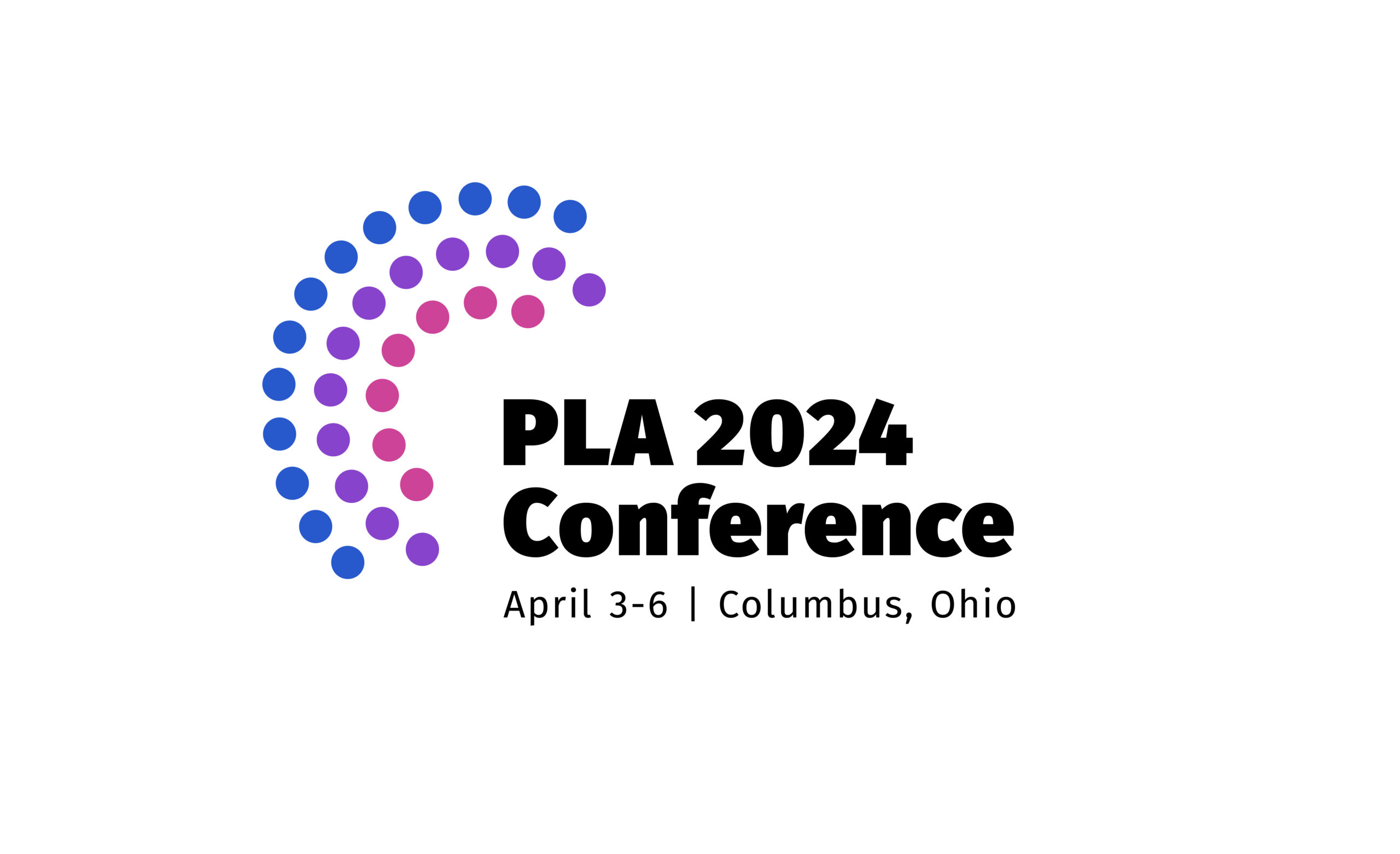
Literacy is our greatest civil right. However, in our country, 65% of fourth graders are not proficient in reading. Eighty-two percent of Black fourth graders are not proficient in reading, and the gap is growing. The most disheartening aspect of these statistics is the pervasive acceptance of persistently low literacy rates among children, which has become ingrained in our national consciousness. This is when researchers stepped in to find out what the problem was. This was the birth of the Science of Reading.
I was honored to receive a scholarship to the PLA 2024 Conference in April 2024 in Columbus, Ohio. While I was there, I attended sessions that featured the Science of Reading and what the public library can do to support reading literacy.
The Reading Wars
Reading instruction has seen significant debates over two main methods: Phonics (Bottom-Up) and Whole Word (Top-Down). Phonics focuses on sounds and letters to decode words, while Whole Word emphasizes sight words and creating meaning from text.
This debate dates back to the 1800s with McGuffey Readers, which offered Word Method, Phonics Method, or a combined approach. In the early 1900s, Beacon Readers promoted a combined method. However, a 1927 article from Teachers College at Columbia University highlighted the importance of teaching whole words. By 1930, phonics was largely abandoned in U.S. classrooms in favor of Whole Word instruction.
During this time, Dick and Jane and Look/Say readers became popular, using simple words and pictures without focusing on letter or sound patterns for decoding.
Why Johnny Can’t Read
The plea to eliminate whole word instruction began in 1955 when Rudolf Flesh wrote his bestseller, “Why Johnny Can’t Read.” He stated that memorizing and guessing the meaning of whole words is not reading. He believed that this guessing and memorizing is a bad habit that prevents children from properly learning to read. The reading wars officially began.
Reading Recovery
In the 1970s, whole word instruction became known as Whole Language. Whole Language rejected the phonics and sight word readers that children had been using. This approach believed that these books were inferior quality literature and were turning children “off” of reading. Instead, it turned to real children’s literature. Teachers would read real children’s literature to the students. Unfortunately, the children were still reading from the sight word readers, and phonics instruction and decoding was completely rejected. Many children were struggling to learn to read.
In 1976, in New Zealand, Marie Clay studied struggling readers to determine why they were struggling. She developed a method that became known as Reading Recovery. She believed children should be taught to use context clues, pictures, and beginning sounds to guess what a word might be. This approach called the Three Cueing Method eventually made its way to the U.S.
Guided Reading
In 1996 two prominent authors, Irene Fountas and Gay Su Pinnell, promoted a Guided Reading Approach. Guided reading involved what was called “Word Work” to integrate some phonics instruction, but this word work was minimal. The bulk of the program was teaching guided reading groups of children at similar reading levels. Children were tested to determine their level and were given books that were at their level. These books had pictures and context clues to help them figure out words. Their program was a huge hit, and soon Guided Reading was everywhere.
By 2000, Guided Reading had spread across almost every school system in the U.S. They weren’t saying “No phonics,” they were just saying that many kids will not “need” phonics.
Reading Workshop
In the 1980s, Lucy Calkins embraced the Three Cueing system and developed the Reading Workshop. The curriculum is based on the belief that when students are motivated to learn, in the right environment full of good books, with lots of freedom and choices, they will naturally develop the skills they need. Children will learn to read by reading. The workshop approach involves a mini lesson and a minimum of 30-40 minutes of independent reading, even at the youngest of ages.
Research
In 1997, reading scores were in such a crisis that the US Congress created the National Reading Panel. They were to examine all the research and determine what is the most effective approach to teach children to read. Their 480-page report in 2000 offered a full rebuke of Whole Language and concluded that systematic, explicit phonics instruction was a requirement in learning to read (National Reading Panel (U.S.) & National Institute of Child Health and Human Development (U.S.), 2000).
One key piece of research by Matt Burns from the University of Florida involved the Benchmark assessments from Guided Reading that are used to determine student reading levels. The assessments were compared to two other assessments that are already proven valid. The Benchmark assessment was only 54% accurate. The study also showed that the Benchmark assessment could only identify 31% of the students that needed reading intervention. (Klingbeil, D.A., McComas, J.J., Burns, M.K. and Helman, L., 2015).
Henry May led a huge study in 2018. They followed thousands of students through three years of education. The study compared two groups of struggling readers. One group received Reading Recovery in first grade and one group did not. The Reading Recovery students were doing better by the end of first grade. However, comparing those same students again at the end of third grade, and the students who had Reading Recovery in first grade performed worse than those who did not have reading Recovery. In addition, this group of students who received Reading Recovery in first grade also received additional intervention in second and third grade, but still did not perform well. (Sirinides, P., Gray, A., & May, H., 2018).
Finally, a study by Sandra Iversen put phonics and cueing head-to-head. Again, it compared two groups of struggling readers. Half of the students went through the Reading Recovery program. The other group when through the same Reading Recovery program with additional instruction in phonics. The students with the additional instruction progressed more quickly than those with Reading Recovery alone. (Iversen, S., & Tunmer, W. E., 1993).
Conclusions
Research concluded that our brain is designed to remember words and meaning of words, but it is not until you connect those words to their letters and sounds that your brain connects neural pathways. These connections are called orthographic mapping. It is these pathways that allow you to remember these written words long term. The written word is mapped to your memory and cannot be lost.
Research also concluded that in their earliest instruction, children who learn explicit phonics appear to learn to read more slowly than those who are learning whole words. However, those learning phonics instruction are the ones who were able to map the written words in the brain. They showed increased activity in the part of the brain that is associated with skilled reading. Their reading instruction stayed with them, and they became good readers. Whole word learners could only memorize so many words.
Legislation
President Bush’s Reading First initiative, part of the 2001 No Child Left Behind Act, allocated $5 billion to improve reading using research-based curricula emphasizing explicit phonics instruction and eliminating the Three Cueing system.
Curriculum is a lucrative business, and proponents of Whole Language, like Marie Clay and Fountas and Pinnell, resisted changes to protect their profits. Some rebranded their programs to gain approval without changing methods. Instead of fully abandoning Whole Language, schools adopted a Balanced Literacy approach, integrating phonics instruction with the Three Cueing system.
Equity
U.S. reading scores reveal significant issues, with 33% of 4th graders lacking basic reading skills. While 75% of white students are proficient readers, only 19% of black students are. This disparity is not tied to school location or funding, as both affluent and impoverished schools struggle. The inequity lies in access to resources. Students with supportive caregivers, financial means for tutors, or additional literacy exposure outside school fare better. A lower percentage of black students have these opportunities compared to white students. (U.S. Department of Education, 2022)
Today
The Reading Wars were primarily fought within education circles, but COVID-19 brought the issue home. Caregivers, now observing their children’s learning firsthand, became more aware of ineffective reading instruction. This led to increased advocacy for change, resulting in new laws reforming reading instruction nationwide. Historically, education has swung between phonics-focused and meaning-focused approaches. A balanced method incorporating great literature, meaningful reading, and systematic phonics instruction is needed.
Many states are changing education laws. Many school systems have changed curriculums and methodologies. Many public libraries are stepping up to find new ways to support children and caregivers as they approach learning to read. These libraries are incorporating the Science of Reading in their programs and resources. At the 2024 PLA Annual conference, I had the opportunity to learn about some of the exciting initiatives happening in public libraries across the US.
Toledo Lucas Public Library has resources to support caregivers specifically with children age birth–2, preschoolers, kindergarteners, grades K-3, older kids, adult help, and educator resources. Each group has information on their website to share what caregivers can do, what resources the library offers, and library programs. They published a magazine in Fall 2023 that takes caregivers through the entire continuum of literacy development and shows what they can do to help their children. Toledo librarians created Busy Books for different age groups that allow children and families to practice these skills in a ringed laminated board book with a dry erase marker. Toledo also offers kits designed for preschoolers to have fun with literacy games and activities.
Dayton Metro Library offers homework help, kindergarten club, and reading buddies. The Kindergarten Club is especially for upcoming Kindergarteners. Families enjoy literacy activities together. School – aged children can sign up for a Reading Buddy. A Reading Buddy is a trained volunteer that spends time reading with a child on a regular basis. Homework help is an open time when students can come without an appointment to get help in any sort of schoolwork.
All nine library systems in Cuyahoga County (OH) came together to make k-12 reading a priority. In addition to regular literacy focused library programs, they offer different reading challenges through the Beanstack app. They also publish literacy tips in local newspapers each month.
Lorain (OH) Public Library System
The Lorain (OH) Public Library System has launched a tutoring program, tutor.com, which connects students to over 3,000 tutors and provides one-to-one homework help, video lessons and test prep for students in kindergarten through 12th grade, early college students, and adult learners.
Columbus (OH) Metropolitan Library
Columbus libraries have Ready for Kindergarten classes as well as intentionally designed play areas with a literacy learning focus. Columbus also has school help centers and Reading Buddies for older kids. For the 2023-2024 school year, they started a full school year of high dosage tutoring. The Columbus program is different because it is a push-in program, sending tutors into the schools to work one on one with students.
Stark Library
In Canton, Ohio, the Stark Library piloted a Summer Fun School initiative. As part of their regular summer book mobile outreach, the library focused on school readiness. In addition to the books available for checkout, readers participated in storytime, literacy, STEM, and problem-solving activities.
San Francisco Public Library began its FOG (Free Orton-Gillingham) readers initiative in 2016. A typical Orton-Gillingham remediation program is extremely expensive. In this free program, readers are paired with volunteer reading tutors. The program is a big commitment between families and tutors. Families go through a detailed orientation. Tutors are trained in a very specific, step-by-step curriculum based on the principles of the Science of Reading and Orton-Gillingham. Readers progress through the Orton-Gillingham levels at their own pace with a systematic approach using the same steps each session: phonemic awareness, vowel intensive, flashcards and blending, vocabulary building, spelling, and more. The FOG readers program was a 2018 recipient of the Urban Library Council’s top Innovator award.
Chicago Public Library (CPL) partnered with the Institute for Multi-Sensory Education, Redwood Literacy, the Black Boy Joy Literacy Campaign, and Big City Readers to develop the Jump Into Reading program. The program focuses on supporting and educating caregivers to help their young readers. CPLdeveloped an extensive decodable books collection. Caregivers are offered resources to help them understand why and how to read these books with their children, how children learn to read based on Scarborough’s Reading Rope as the “Jump Rope” for Jump into reading, how to choose a decodable book, and more. Families are also provided with ‘grab and go’ phonological awareness kits. Finally, the library offers storytimes specifically designed to support beginning readers.
Charleston County (SC) Public Library
Charleston County streamlined storytimes to provide consistent quality programs that would increase school readiness based on the ECRR standards. Multiple storytimes per week divide children into 4 separate age groups: baby, toddler, preschool, and families. A large component of these storytimes is a focus on parent education through parent asides, songs, and activities they can take away and do at home.
All of these public libraries have stepped up with intention to support the Science of Reading and bridge the reading gap. Literacy drives democracy. It is freedom. Illiteracy is a pipeline to unemployment, depression, homelessness, and incarceration. During the Cold War, we had a push for Science and Math. We believed they were the gateway to success in life. Now, we live in the information age and that means we need to be able to read. In this literacy crisis, we need all hands on deck to help get our students on track to being readers.
Resources
Calkins, Lucy. The Art of Teaching Reading. (New York, Heinemann, 1994).
Chall, Jeanne. Learning to Read: The Great Debate, Updated ed. (New York: McGraw-Hill, 1967).
Clay, Marie. Reading Recovery, Reprint Edition. (New York, Heinemann, 1993).
Ehri, Linnea. “Grapheme-Phoneme Knowledge is Essential for Learning to Read Words in English” in Word Recognition in Beginning Literacy (Mahwah: Lawrence Erlbaum Associates, Publishers, 1998).
Fassett, James. The New Beacon Primer (New York: Ginn and Company, 1921).
Flesch, Rudolf. Why Johnny Can’t Read (New York: Harper & Row, 1955).Flesch, Rudolf. Why Johnny Still Can’t Read (New York: Harper & Row, 1981).
Fountas, Irene and Gay Su Pinnell. Guided Reading: Good First Teaching for All Children. (New York, Heinemann, 1996).
Gates, Arthur, “Studies of Phonetic Training in Beginning Reading,” Journal of Educational Psychology, 18 (1927): 227.
Gillingham, Anna and Bessie W. Stillman. The Gillingham Manual: Remedia Training Dor Students with Specific Disability in Reading, Spelling, and Penmanship. 8 Ed. (Educators Publishing Services, 1997).Goodman, Ken. “Reading: A Psycholinguistic Guessing Game,” Journal of the Reading Specialist, May (1967): 127.
Goodman, Ken. What’s Whole in Whole Language (Portsmouth: Heinemann Educational Books, 1986).
Handford, Emily. (Host) Sold a Story. [Podcast] (American Public Media, 2022). https://features.apmreports.org/sold-a-story/
Huey, Edmunds. The Psychology and Pedagogy of Reading (1908; reprint, Cambridge: M.I.T. Press, 1968).
Iversen, S., & Tunmer, W. E. (1993). Phonological processing skills and the Reading Recovery Program. Journal of Educational Psychology, 85(1), 112–126.
Klingbeil, D.A., McComas, J.J., Burns, M.K. and Helman, L. (2015), COMPARISON OF PREDICTIVE VALIDITY AND DIAGNOSTIC ACCURACY OF SCREENING MEASURES OF READING SKILLS. Psychol. Schs., 52: 500-514. https://doi.org/10.1002/pits.21839
Lemann, Nicholas. “The Reading Wars,” The Atlantic, November 1997, 84.
Mackenzie, Jenny. The Right to Read. [Documentary] (Utah Film Center, 2023). https://www.therighttoreadfilm.org/
May, Henry & Phillip Sirinides and Abigail Gray. (2018). The Impacts of Reading Recovery at Scale: Results From the 4-Year External Evaluation. Educational Evaluation and Policy Analysis. 40(3), 316-335.
McGuffey, William. The Eclectic Manual of Methods (New York: Van Antwerp, Bragg, & Co, 1885).
National Reading Panel (U.S.) & National Institute of Child Health and Human Development (U.S.). (2000). Report of the National Reading Panel: Teaching children to read : an evidence-based assessment of the scientific research literature on reading and its implications for reading instruction. U.S. Dept. of Health and Human Services, Public Health Service, National Institutes of Health, National Institute of Child Health and Human Development.
Share, D.L. (1995) “Phonological recoding and self-teaching: Sine qua non of reading acquisition,” Cognition, 55, 151-218.
Sirinides, P., Gray, A., & May, H. (2018). The Impacts of Reading Recovery at Scale: Results From the 4-Year i3 External Evaluation. Educational Evaluation and Policy Analysis, 40(3), 316-335. https://doi.org/10.3102/0162373718764828
Smith, Frank. Reading Without Nonsense, 3 ed. (New York: Teachers College Press, 1997).
U.S. Department of Education. Institute of Education Sciences, National Center for Education Statistics, National Assessment of Educational Progress (NAEP), 2022 Reading Assessment. https://nces.ed.gov/nationsreportcard/reading
Tags: PLA 2024 conference, pla 2024 scholarship, pla conference, pla2024

